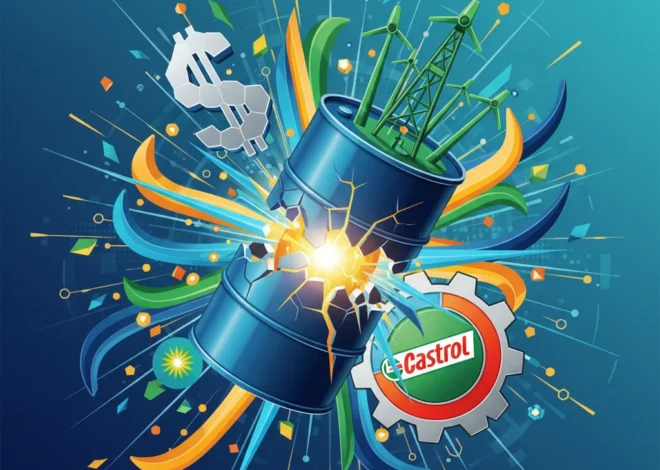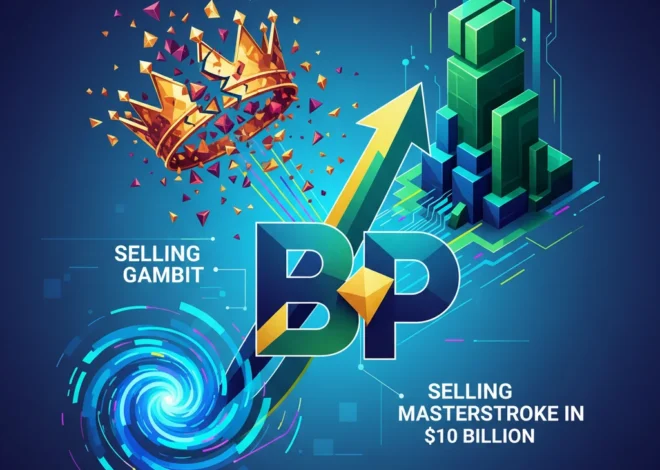
The Great Unbundling: Why Private Equity is Carving Up Europe’s Industrial Empires
Introduction: The Twilight of the Titans
For generations, the European industrial landscape was dominated by sprawling conglomerates—behemoths like Siemens and Thyssenkrupp whose reach extended across dozens of unrelated sectors. These titans were symbols of post-war economic might, their diversification a supposed shield against the volatility of the market. But the winds of change have been blowing fiercely across the continent. Today, these once-mighty empires are splintering, shedding assets and spinning off divisions at an unprecedented rate. And stepping into the void are the new kings of capital: private equity firms.
This isn’t just a simple asset sale; it’s a fundamental restructuring of the European corporate world. Buyout firms are not just acquiring these cast-off divisions; they are betting billions that they can unlock hidden value where the parent companies could not. By injecting capital, imposing operational discipline, and leveraging cutting-edge financial technology for analysis and management, they aim to turn these non-core, often overlooked business units into lean, profitable, and specialized leaders. This trend has profound implications for the European economy, the future of its industrial base, and the world of investing.
Why the Conglomerate Model is Crumbling
The “conglomerate discount” is a well-known phenomenon in finance. It refers to the tendency for the market to value a diversified group of businesses at less than the sum of its individual parts. For years, investors have argued that these sprawling structures are inefficient, lack focus, and obscure the true performance of their underlying assets. Why should a world-class medical technology business be shackled to a legacy power and gas division? This question is at the heart of the pressure campaign waged by a new generation of activist investors.
These activists, armed with sophisticated data analysis and a compelling narrative for the stock market, argue that focus creates value. They push boards to de-merge, spin off, or sell non-core assets to simplify their stories and allow star divisions to shine. The logic is compelling: a specialized company is easier for analysts to understand, more agile in its decision-making, and better able to allocate capital to its most promising growth areas.
The results of this pressure are clear. According to data cited by the Financial Times, European companies announced spin-offs and de-mergers of businesses with a combined enterprise value of over €120bn in a recent 18-month period. This massive “unbundling” has created a fertile hunting ground for private equity firms, who see these corporate “carve-outs” as prime opportunities.
The Great Pension Offload: Why Companies Are Rushing to Sell Your Retirement Plan
The Private Equity Playbook: From Neglected Division to Standalone Star
When a private equity firm acquires a corporate orphan, it isn’t a passive investment. It’s the beginning of an intense, hands-on transformation process. The goal is to take a division that was likely starved of capital and management attention and turn it into a high-performing, independent entity. The playbook typically involves several key steps:
- Sharpening Strategic Focus: The first step is to liberate the division from the parent company’s bureaucracy. A new, dedicated management team is installed with a clear mandate and incentives aligned with performance. The strategy is narrowed to focus only on the core strengths of the business.
- Operational Overhaul: PE firms bring in operational experts to streamline processes, cut unnecessary costs, and improve efficiency. This can involve anything from modernizing factory floors to optimizing supply chains—perhaps even implementing technologies like blockchain for enhanced transparency and tracking.
- Aggressive Capital Investment: Unlike the former parent company, which had to balance investment across numerous divisions, the PE owner can pour capital directly into the business. This funds R&D, technology upgrades (including modern fintech solutions for financial management), and strategic acquisitions to build scale.
- Growth Through M&A: The newly independent company often becomes a platform for a “buy-and-build” strategy. The PE firm will fund bolt-on acquisitions of smaller competitors, rapidly consolidating the market and expanding the company’s footprint.
This approach transforms the fundamental economics of the business, preparing it for an eventual exit—typically through a sale to another company or an Initial Public Offering (IPO)—in 3 to 7 years.
The scale of these transactions is significant, reshaping entire sectors of the European industrial market. Below is a look at some of the landmark deals that illustrate this trend:
| Parent Company | Divested Unit | Private Equity Acquirer(s) | Reported Deal Value |
|---|---|---|---|
| Thyssenkrupp | Elevator Technology | Advent International & Cinven | €17.2 billion (source) |
| Siemens | Innomotics (Large Drives Applications) | KKR | €3.5 billion (source) |
| Caverion | Building Services | Triton Partners | €1.5 billion (approx.) |
| Saint-Gobain | UK Distribution Business | Stark Group (backed by CVC) | £740 million |
Case Studies: Siemens and Thyssenkrupp Lead the Charge
The transformations at German industrial giants Siemens and Thyssenkrupp serve as powerful case studies. For years, Siemens operated as a classic conglomerate, with interests ranging from high-speed trains to medical scanners. Under CEO Joe Kaeser and his successor Roland Busch, the company has undergone a radical simplification. It spun off its energy division (Siemens Energy) and its health-tech arm (Siemens Healthineers), both of which are now independently listed and thriving. The recent €3.5bn sale of its Innomotics electric motors unit to KKR is the latest step in this journey to become a focused, high-tech “technology company.” KKR’s plan is to invest heavily in the unit, positioning it to capitalize on the global electrification trend.
Thyssenkrupp’s story is even more dramatic. The once-sprawling steel-to-submarines conglomerate was under intense pressure from activist investors like Cevian Capital. The turning point was the landmark €17.2bn sale of its prized elevator division to a consortium led by Advent and Cinven. This single deal provided a massive cash infusion that helped stabilize the struggling parent company and allowed the elevator business to pursue a more aggressive growth strategy under its new owners, unburdened by the troubles of the legacy steel business.
The Unseen Threat: Are 'Zombie' Firms About to Haunt Private Capital for a Decade?
The Broader Implications for the European Economy and Investors
This great industrial unbundling is more than just a series of high-stakes corporate chess moves. It signals a major shift in corporate philosophy and has wide-ranging consequences.
For the European economy, it could be a catalyst for renewed dynamism. By creating a host of focused, mid-sized industrial specialists (“Mittelstand” on a larger scale), this trend could foster innovation and global competitiveness. These newly independent companies, backed by well-capitalized PE firms, are better positioned to invest in R&D and digital transformation, securing Europe’s place in the industries of the future. The role of banking institutions in providing the debt financing for these complex transactions is also crucial, acting as a key enabler of this entire cycle of corporate renewal.
For investors, this trend offers new opportunities but also requires careful analysis. The spin-offs themselves create new, publicly-traded companies that can be evaluated on their own merits. However, the real action is often in the private markets, where PE funds are raising capital to execute these strategies. Understanding the dynamics of corporate carve-outs is becoming essential for anyone involved in institutional investing or trading European equities.
The New Global Real Estate Playbook: Six Cities Redefining Prime Property Investing
Conclusion: A New Industrial Revolution, Funded by Private Capital
The age of the unwieldy European industrial conglomerate is drawing to a close. In its place, a new ecosystem is emerging—one characterized by focus, agility, and a relentless drive for efficiency. Private equity firms are the architects and financiers of this transformation, identifying undervalued assets within these old empires and betting that they can forge them into something stronger and more valuable.
This is a high-risk, high-reward game. The success of this trend will depend on the ability of PE managers to navigate a complex economic environment and deliver genuine operational improvements. But if they succeed, they will not only generate substantial returns for their investors but also help write the next chapter of European industrial history, creating a new generation of specialized global champions from the remnants of the old guard.


